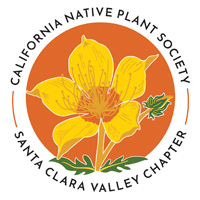California Native Hummingbird Plants
Originally by Ellie Gioumousis (revised 8/18/2019)
Hummingbirds seem to favor red flowers, possibly because bees tend to avoid red flowers resulting in more nectar in them. They also prefer flowers with tubular shapes, which are a perfect fit for their long beaks and tongues. Hummingbirds do not rely on nectar alone though; a significant percent of their diet comes from insects and arthropods, so leave the bugs for the birds.
- Aquilegia formsa (Western columbine)
- Will take sun or shade but takes more water in sun. It blooms in spring with delightful red and yellow hanging flowers.
- Arctostaphylos (Manzanita)
- Many species; blooms from January to March and is drought tolerant. Part sun to light shade. Berries provide food for other birds.
- Chilopsis linearis (Desert-willow)
- This small tree grows by washes and oases in the desert so does need some water. It has beautiful rose- lavender flowers and needs heat to bloom.
- Cirsium occidentale (California thistle)
- This is the cobweb thistle, a native. It has white foliage and a brilliant red flower and is not invasive. It grows in open woodlands in this area. It is an extremely good source of nectar.
- Cynoglossum grande (Hound's tongue)
- This is a native forget-me-not that is found in open woods and blooms in March. It is fairly drought tolerant when established, going completely dormant in summer.
- Delphinium cardinale (Cardinal or Scarlet larkspur)
- Beautiful brilliant red flowers on 2' to 5' stalks blooming from May to June. Needs good drainage, partial shade and regular water while growing. Goes dormant in summer.
- Diplacus aurantiacus (Sticky monkeyflower)
- This 4 foot shrub is covered with orange/yellow flowers in the spring and early summer. Both hummingbirds and butterflies love it.
- Epilobium sp. (formerly Zauschneria) (California fuchsia)
- Several varieties, but all have bright orange flowers which bloom in late summer and fall and are excellent nectar sources. They are hardy and extremely drought tolerant.
- Gambelia (Galvezia) speciosa (Showy island snapdragon)
- Bright red snapdragon-like flowers. It is tender to frost but grows back quickly if wellmulched. Produces flowers almost all year. Can be cut back in late February.
- Keckiella cordifolia (Heartleaf keckiella, Climbing penstemon)
- Native to southern California, this plant is works well next to fences or at the base of a tree or next to a large shrub. Bunches of red tubular flowers from May through July.
- Lonicera hispidula (California honeysuckle)
- This is a vine that is happy both as a ground cover or climbing up a tree or fence.
- Lonicera involucrata (Twinberry)
- Known as Twinberry because of the flowers and fruit that grow in pairs, it is easy and quick to grow but prefers some shade and needs regular moisture.
- Malva (Lavatera) assurgentiflora (Island mallow)
- This Channel Island native will grow 10 feet in one year. It blooms nearly all year with pretty rose- pink flowers that are valuable as a nectar source for hummers.
- Monardella macrantha (Hummingbird monardella)
- This small perennial has long red tubular flowers from June through October. It grows well in pots and rock gardens.
- Penstenmon
- Like the sages, there are many different species and all like full sun and are drought tolerant. They usually require good drainage.
- Ribes sanguineum var. glutinosum (Red-flowering currant)
- Many selections with beautiful pink pendulous blossoms in early spring. Light shade to part sun and some water. Berries are attractive to other birds.
- Ribes speciosum (Fuchsia-flowered gooseberry)
- Bright red fuchsia-like flowers in early spring. Light shade and some water.
- Salvia (Sage)
- There are many native species that are good sources of nectar. They are drought tolerant and take full sun.
- Salvia spathacea (Hummingbird Sage)
- This sage deserves a special mention as it’s one of the few that likes shade and spreads by rhizomes. It has spectacular tall magenta spikes. An excellent groundcover under oaks.
- Silene laciniata (Fringed Indian pink or Catch fly)
- This is a pretty little plant that is unfortunately very attractive to snails as well as to hummers. It can be grown in hanging baskets to protect it from the snail's depredations.
- Trichostema lanatum (Woolly blue curls)
- Striking shrubby blue-flowered perennial native to the southern coastal ranges. It requires good drainage and no summer water. Has a long blooming period.
More information available on calscape.org

